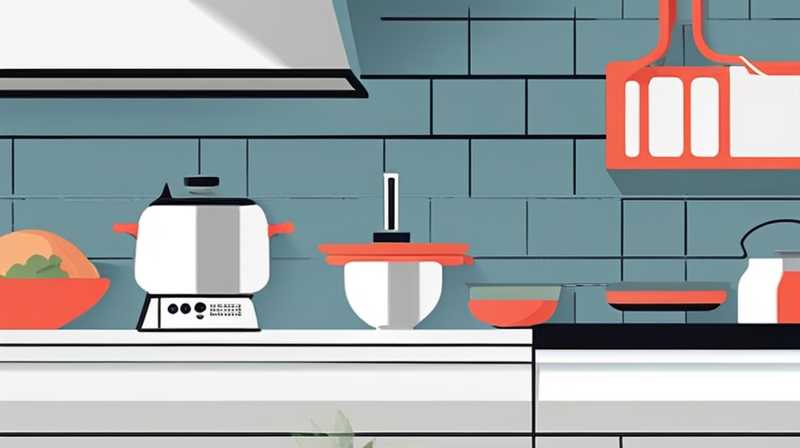
1. Solar cookers are efficient devices, designed to harness solar energy for cooking, 2. Key advantages include cost-effectiveness, environmental benefits, and versatility, 3. Steps for optimal usage involve proper positioning, suitable cookware, and timing considerations, 4. Maintenance requirements ensure longevity and performance.
To delve deeper into each aspect, it’s essential to understand how solar cookers function and the practical applications they hold within a culinary environment.
1. UNDERSTANDING SOLAR COOKERS
Solar cookers operate primarily on the principle of converting sunlight into thermal energy. These devices incorporate reflective surfaces that concentrate sunlight, resulting in elevated temperatures sufficient for culinary activities. The effectiveness of solar cookers hinges upon the design—typical types include box cookers, parabolic types, and panel cookers. Each design offers unique characteristics and efficiencies, influencing cooking time and food handling.
Box cookers, characterized by their insulated chambers, trap heat effectively, making them suitable for slow cooking. Parabolic styles, renowned for their intensified focal points, can reach higher temperatures rapidly, allowing for frying and grilling. Conversely, panel cookers are lightweight and portable, ideal for tasks requiring less heat.
2. ADVANTAGES OF SOLAR COOKING
Utilizing solar energy for cooking not only proves beneficial for individual users but also offers broad environmental advantages. Cost-effectiveness is an immediate benefit as solar cookers significantly reduce reliance on traditional fuels. With the rising prices of electricity and gas, solar cooking presents a sustainable solution for budgeting households.
Environmental preservation is a vital consideration in contemporary times. Solar cookers emit zero carbon footprints during operation, contributing to reduced greenhouse gas emissions. Furthermore, solar cooking aids in resource conservation by lessening the demand for firewood, thereby preserving forests and decreasing deforestation. Each of these elements enhances the cooking experience while promoting sustainable practices.
3. HOW TO USE SOLAR COOKERS
Utilization of solar cookers requires specific attention to detail to maximize efficiency. Proper positioning of the cooker is crucial; it must always face direct sunlight to harness energy effectively. Ideal locations encompass open spaces free from obstructions such as trees or buildings, ensuring uninterrupted solar access throughout the cooking period.
Choosing suitable cookware is another fundamental aspect. Dark, non-reflective pots absorb heat more effectively, whereas shiny materials may reflect sunlight, reducing efficacy. Utilizing pots with lids is advisable to retain heat and moisture during the cooking process, enhancing efficiency. Timing also plays a significant role; food may require more extended periods to cook than conventional stovetops, especially during periods of lower solar intensity.
4. MAINTAINING SOLAR COOKERS
Routine maintenance of solar cookers is essential to ensure long-lasting performance and efficiency. Regular inspection of reflective surfaces prevents dust accumulation, which can impede functionality. A simple cleaning process with a soft cloth and mild detergent is often sufficient to retain optimal reflectivity, thereby enhancing cooking capabilities.
Storage is another factor—when not in use, cookers should be stored in a protected environment to shield them from adverse weather conditions that could damage the materials. Necessary repairs should be conducted as soon as issues are noticed; failure to address minor damages can lead to larger malfunctions over time. By adhering to these maintenance protocols, users can ensure their solar cooker remains a reliable and efficient culinary tool.
COMMON INQUIRIES
WHAT TYPES OF FOODS CAN BE COOKED IN SOLAR COOKERS?
Solar cookers are incredibly versatile, capable of preparing a wide variety of dishes. Common options include stews, casseroles, rice, and baked goods. Foods requiring longer cooking times, such as beans and lentils, can benefit significantly from the slow cooking process offered by solar energy.
For baking, recipes often adapt well due to the consistent, gentle heat provided by solar cookers. Muffins, breads, and cakes can achieve desirable results. Furthermore, meats can be slow-roasted effectively when timed appropriately and paired with suitable cookware to retain heat and moisture. Each food type requires careful selection and preparation to yield delicious outcomes through solar cooking.
HOW LONG DOES IT TAKE TO COOK FOOD IN A SOLAR COOKER?
Cooking durations in solar cookers can vary widely depending on several factors, including the type of cooker, the weather, and the food being prepared. Generally, users can expect longer cooking times compared to traditional methods, possibly ranging from an hour up to several hours.
Optimal conditions greatly influence timing—sunny and clear days enhance cooking efficiency significantly. During peak solar hours, typically between 10 a.m. and 3 p.m., food can reach desired temperatures in shorter periods. However, it’s wise to become familiar with each model’s performance characteristics as this will provide realistic expectations for meal preparation.
CAN SOLAR COOKERS OPERATE ON CLOUDY DAYS?
Solar cookers can still function under cloudy conditions, although their efficiency may reduce considerably. Diffused sunlight can still provide some heating; however, the cooking times will significantly increase, similar to cooking under reduced heat on a traditional stove.
When using a solar cooker during overcast conditions, feedback from users suggests slow cooking techniques yield better results. Food items that require less heat, such as simmering sauces or soups, may be better suited for these circumstances. Planning meals and adjusting expectations based on daily weather forecasts are essential for maximized cooking effectiveness.
Solar cookers represent a revolutionary approach to food preparation, merging convenience with sustainability. By utilizing solar energy, one experiences not just the enjoyment of cooking but also contributes to environmental preservation. Each aspect of choosing, using, and maintaining solar cookers reinforces their practicality and importance in modern-day kitchens.
Adopting such a cooking method may require adjustments regarding timing and techniques; however, the rewards are abundant. The ongoing shift toward renewable energy solutions necessitates exploring innovations that simplify functionality while promoting sustainable practices. As solar technology continues to evolve, so too does its application within culinary environments, providing an ever-expanding horizon for environmentally conscious cooking without sacrificing flavors or quality.
In summary, individuals embracing the art of solar cooking not only gain an enhanced understanding of energy conservation but also enjoy the added benefits of healthier cooking and cost savings over time.
Original article by NenPower, If reposted, please credit the source: https://nenpower.com/blog/how-to-use-solar-cookers-in-the-kitchen/


